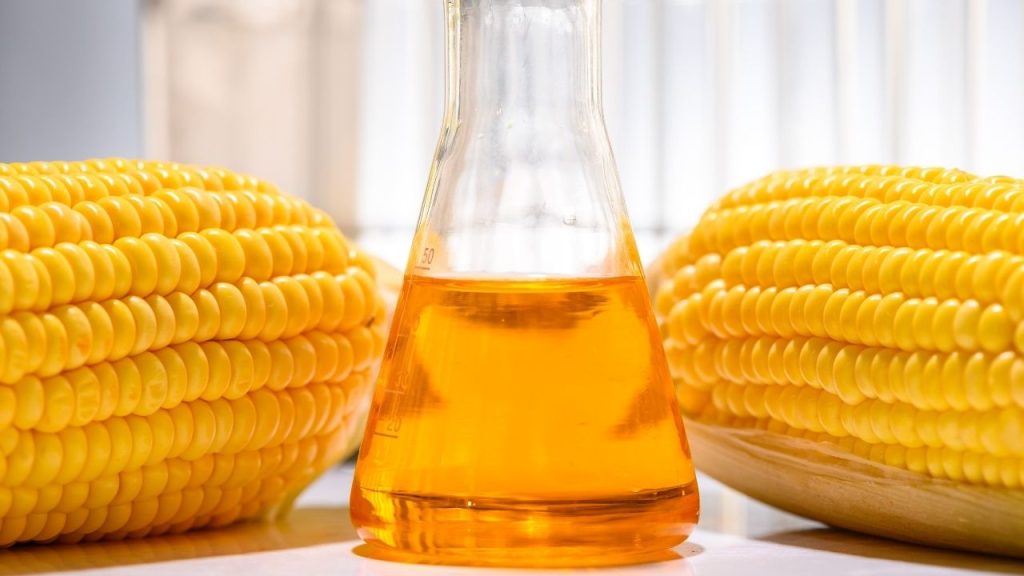Production of L-Lysine Hydrochloride from Corn: A Comprehensive Analysis

L-Lysine Hydrochloride is a necessary amino acid that plays a critical duty in various biochemical processes and healthy protein synthesis in the body. While it’s naturally existing in food things, there is an expanding need for it in markets like drugs, artificial additive, and pet feed. Manufacturing of L-Lysine Hydrochloride from corn provides a sustainable and financially viable method to accommodate this demand.
Feasibility and Techno-Economic Viability Study:
Corn, being an abundant source of glucose, serves as an outstanding basic material for the fermentation procedure needed to generate L-Lysine. Recent developments in microbial fermentation strategies using certain pressures of germs have made it possible for efficient conversion of corn’s glucose to L-Lysine. In regards to costs, corn-based manufacturing commonly becomes cheaper contrasted to synthetic techniques or extraction from other sources.
Why Invest in this Manufacturing Industry?
Market Dimension and Share: The global market for L-Lysine has actually seen a stable development as a result of its boosting application in food and feed industries. In addition, as international meat intake climbs, the demand for pet feed enhanced with L-Lysine additionally escalates.
Patterns: The expanding health-consciousness and raised concentrate on protein-rich diets are promoting supplements and foods strengthened with amino acids, including L-Lysine.
SWOT Analysis:
Strengths:
Sustainable production making use of corn. Established demand in different sectors. Technical innovations helping with economical manufacturing.
Weaknesses:
Reliance on corn costs. Technical obstacles in particular areas. Manufacturing can be affected by seasonal variability of corn crops.
Opportunities:
Climbing demand in arising markets. Prospective for expanding right into high-value pharmaceutical segments. Technology in fermentation strategies.
Threats:
Competitors from synthetic L-Lysine makers. Fluctuations in global corn production. Strict policies and conformity standards in particular markets.
Profitability Analysis:
Production of L-Lysine from corn has actually experienced better earnings margins as a result of technological innovations and scaled production. The persisting need from established fields guarantees a stable revenue stream.
Global Expansion and Localization:
While North America and Europe are major producers, there’s immense potential in Asian markets, both in production due to availability of corn and in consumption due to the booming livestock sector. However, it’s crucial for companies to localize operations, considering regional regulatory standards and local corn production cycles.
Supply Chain:
A robust supply chain ensures consistent corn availability. Partnerships with local farmers, adoption of sustainable farming practices, and investment in storage infrastructure are crucial.
Branding and Marketing:
Positioning L-Lysine produced from corn as a sustainable and natural product can appeal to the eco-conscious segment. Marketing strategies should focus on its applications and benefits in animal feed, health supplements, and pharmaceuticals.
Regulatory Changes and Industry Compliance:
While the production process is generally deemed safe, regulations might differ regionally. It’s essential to remain updated on compliance standards, especially when expanding to new markets.
Technological Innovation:
Continual investment in R&D can lead to better fermentation techniques, increasing yield and reducing production costs.
Competitor Analysis:
While corn-based L-Lysine production has its advantages, synthetic production methods and alternative sources remain competition. Staying ahead requires innovation, cost optimization, and market penetration strategies.
Visit this Page for More Information: Start a Business in Chemical Industry Projects
Frequently Asked Questions:
Is L-Lysine from Corn as Effective as From Other Sources?
Yes, the efficacy remains the same irrespective of the source.
What’s the Environmental Impact of Corn-Based Production?
Compared to synthetic methods, corn-based production is more sustainable. However, environmental impacts depend on farming practices.
Are there GMO Concerns with Corn Used in Production?
The use of GMO corn varies by region and regulatory standards. Companies often provide details on GMO usage.
Future Opportunities:
The progressing wellness and health sector provides enough chances for expanding L-Lysine items, from nutraceuticals to specialized pharmaceutical applications.
Raw Material Sourcing and Sustainability:
Corn stands as a resilient plant, cultivated extensively throughout diverse climates, from The United States and Canada to Africa. Its wealth guarantees a regular supply of raw material for L-Lysine manufacturing. An important factor in establishing the earnings and viability of L-Lysine production is lasting sourcing. Close cooperation with regional farmers, motivating chemical-free farming practices, and even participating in long-lasting contracts can result in a constant and quality corn supply.
Manufacturing Process Overview:
The transformation of corn to L-Lysine Hydrochloride involves several stages:
Corn Milling: Initially, corn kernels undergo milling to extract glucose-rich starch.
Liquefaction: The starch is broken down into simpler sugars using enzymes.
Fermentation: Specific strains of bacteria, primarily Corynebacterium or Brevibacterium, feed on these sugars to produce L-Lysine.
Refinement: The fermentation broth undergoes several purification steps to extract pure L-Lysine, which is then converted to its hydrochloride salt for stability and easy handling.
Related Business Plans: Chemicals (Organic, Inorganic, Industrial)
Cost Structure and Financial Implications:
Recognizing the price framework is essential for any kind of capitalist or stakeholder. Significant prices consist of basic materials, specifically corn, fermentation infrastructure, labor, utilities, governing compliance, R&D, and logistics. Economies of range play an essential function: as production scales up, the per-unit price of L-Lysine production goes down dramatically.
Technological Developments:
Biotechnological advancements are forming the L-Lysine market. Genetic modifications of microbial pressures to boost their efficiency, computer-controlled fermentation processes, and advanced filtration techniques are several of the developments. Embracing these modern technologies can supply companies an one-upmanship on the market.
Human Resources and Skill Development:
A competent labor force is the backbone of L-Lysine manufacturing. Training in microbial fermentation, quality assurance, and machinery operation are basic. Business ought to buy continual training and skill advancement to make sure quality and efficiency.
Consumer Perspective and Branding Insights:
Consumer choices are turning towards natural and sustainable items. Branding L-Lysine derived from corn as a green and natural item can position it favorably on the market. Clear labeling, outlining the sourcing and producing methods, can construct consumer depend on.
Global Markets and Localization Strategy:
Different regions have actually varied demands and regulative requirements. For instance, while Europe emphasizes non-GMO products, Eastern markets might focus on cost-effectiveness. Customizing the item to suit regional preferences and abiding by neighborhood policies is important for worldwide development.
Risk Management:
Like any industry, the L-Lysine sector has its risks, from fluctuating corn prices to unexpected regulatory changes. Having a robust risk management strategy, diversifying sources of corn supply, and keeping abreast of global regulatory changes can mitigate potential challenges.
Feedback and Continuous Improvement:
Integrating feedback from various stakeholders, be it consumers, distributors, or even employees, can provide invaluable insights. Regularly revisiting and refining production processes, marketing strategies, and expansion plans based on this feedback ensures the company’s adaptability and resilience.
Application and Research Insights:
Beyond its established applications in animal feed and health supplements, L-Lysine holds potential in various sectors. Preliminary research hints at its role in enhancing calcium absorption, potentially aiding in osteoporosis management. Tapping into such niche sectors can open new revenue streams.
Navigating Competition:
To stay ahead, companies should not only focus on cost-effectiveness but also on product quality, sustainability, and ethical practices. Regular SWOT (Strengths, Weaknesses, Opportunities, Threats) analyses can aid in identifying areas of improvement and potential threats from competitors.
Collaborations and Partnerships:
Forming strategic alliances with universities, research institutions, and other stakeholders can foster innovation. Such partnerships often lead to groundbreaking research, opening new avenues for application and enhancing production efficiency.
Regulatory Adherence and Ethical Considerations:
Beyond mere compliance, ethical considerations in production can enhance a brand’s reputation. Ensuring fair wages, safe working conditions, and ethical sourcing practices can position a company as a responsible and trustworthy entity.
Read our Book Here: The Complete Technology Book on Chemical Industries
Environmental Considerations:
The production process’s environmental footprint, from water usage in corn farming to emissions during manufacturing, needs consideration. Adopting sustainable practices, like rainwater harvesting, waste recycling, and green energy utilization, can significantly reduce this footprint.
Delving into the Corn Belt
Understanding Corn Farming: Prior to diving into L-Lysine production, it’s vital to comprehend corn farming’s complexities. The Corn Belt, mainly covering the United States Midwest, plays a central role in guaranteeing a steady supply for different industries, consisting of L-Lysine production.
Ranges of Corn: Not all corn is produced equal. The damage corn, defined by its indented bits, is the main kind utilized for commercial objectives, including L-Lysine manufacturing.
Agricultural Practices: Plant turning, sustainable bug control, and natural farming play critical roles in maintaining soil fertility and making certain regular yields.
The Corn Lifecycle: From sowing to harvest, understanding corn’s growth cycle aids synchronize the raw product supply with L-Lysine manufacturing demands.
The Economic Impact of Corn Farming:
Corn farming isn’t nearly the plant. It’s an economic column sustaining millions of resources. For the L-Lysine market, promoting strong partnerships with these farming neighborhoods is critical.
Supporting Regional Economic Situations: By sourcing in your area, companies can inject resources into these communities, leading to shared growth.
Obstacles in Corn Farming: Climate modification, bug invasions, and changing market prices posture significant obstacles. L-Lysine manufacturers can companion with farmers, giving them with resilient plant ranges or financial support during lean times.
Industrial Transformation – Corn to L-Lysine
Microbial Fermentation – The Heart of the Refine:
It’s fascinating exactly how a complicated particle like L-Lysine is synthesized from simple corn sugars making use of tiny germs.
Picking the Right Germs: The performance of Corynebacterium or Brevibacterium stress can differ. Continual research into searching for or genetically crafting the best stress can revolutionize output.
Maximizing Conditions: Elements like pH, temperature level, and nutrient supply can considerably influence fermentation efficiency. Maintaining these criteria regularly makes certain a steady L-Lysine yield.
Downstream Processing – Purification and Beyond:
Once fermentation concludes, it’s all about isolating L-Lysine from the broth.
Filtration and Centrifugation: These primary processes separate cells and larger debris from the L-Lysine-containing liquid.
Chromatography: This sophisticated technique can isolate L-Lysine with high purity, ensuring that the final product meets stringent quality standards.
Quality Control – Ensuring the Best for the Market:
Even minute impurities can render a batch of L-Lysine unsuitable for certain applications, especially in pharmaceuticals. Hence, rigorous quality control is non-negotiable.
Advanced Analytical Techniques: Techniques like High-Performance Liquid Chromatography (HPLC) ensure product purity.
Batch Consistency: Regular checks ensure that every batch hitting the market maintains the brand’s promised quality.
The Market Dynamics
Understanding Demand and Supply Curves: Like any product, L-Lysine’s market dynamics are shaped by its demand and supply.
Evolving Demands: While animal feed remains a dominant sector, new research continually uncovers novel L-Lysine applications, reshaping demand.
Supply Challenges: From corn crop failures to disruptions in fermentation, various factors can impact L-Lysine supply. Strategic stockpiling and diversifying supply chains can buffer against such disruptions.
Emerging Markets – The New Frontiers:
Regions like Southeast Asia, with their booming livestock industry and growing health-conscious middle class, are emerging as significant L-Lysine markets.
Tailoring to Local Needs: While the core product remains the same, auxiliary factors like packaging, branding, and even the form (powder vs. liquid) might need tweaks based on regional preferences.
Cultural Sensitivities: Understanding and respecting local cultures and values when entering a new market can make the difference between success and failure.
Looking Ahead – The Future of L-Lysine from Corn
Sustainability – The New Mantra:
The world is rapidly pivoting towards sustainable practices, and the L-Lysine industry must adapt.
Green Production: Adopting renewable energy sources, minimizing waste, and ensuring efficient water use are vital.
Sustainable Farming: Collaborating with farmers to adopt sustainable and organic farming practices ensures a greener product.
Innovation – The Road to Evolution:
Stagnation is a precursor to decline. Constant advancement, be it in production approaches, microbial stress, or new applications, is crucial.
Genetic Modification: Changing microbial stress to improve their L-Lysine production effectiveness or resistance versus contaminants can dramatically boost yields.
Unique Applications: Research study is hinting at L-Lysine’s function in locations like neurology, specifically in problems like anxiousness and anxiety. Taking advantage of such particular niches can open brand-new avenues.
Grasping the Business Model
Capital Expense & Infrastructure: For newbies in the L-Lysine sector or existing players seeking to expand, recognizing the complexities of capital investment is vital.
Establishing Plants: The first setup price for an L-Lysine manufacturing facility can be considerable. It incorporates land procurement, infrastructure advancement, equipment purchase, and more.
Roi (ROI): Although the first setup expense is high, the ROI can be durable. A streamlined manufacturing process, buoyed by a climbing demand for L-Lysine, guarantees that financiers can expect considerable returns.
Supply Chain Complexities:
A smooth supply chain, from cornfields to consumers, guarantees consistent production and market supply.
Farm Linkages: Establishing direct partnerships with corn farmers or cooperatives can ensure a steady raw material influx and can also influence the quality of the corn supplied.
Distribution Networks: A robust distribution network ensures that L-Lysine reaches its varied markets, from animal feed producers to pharmaceutical companies, efficiently.
Human Resource – The Core of Production:
While machinery and microbes do the tangible production, it’s the human minds and hands behind them that orchestrate this symphony.
Skilled Labor: From microbiologists to machine operators, a skilled workforce is vital.
Employee Well-being: Ensuring a safe working environment, fair compensation, and growth opportunities can reduce attrition rates and boost productivity.
Strategic Marketing & Brand Building
Identifying Target Audiences: Different L-Lysine applications have varied target audiences. Identifying and understanding them is the first step in effective marketing.
Livestock Farmers & Feed Producers: They form the primary L-Lysine consumers. Tailored marketing campaigns highlighting growth boosts and health benefits can appeal to this segment.
Health-conscious Consumers: With L-Lysine’s potential role in health supplements, targeting this group through campaigns emphasizing its natural corn origin can be beneficial.
Branding – More than Just a Name:
In today’s market, branding goes beyond just naming a product. It encapsulates the values, promises, and ethos of the company.
Eco-friendly Branding: Positioning L-Lysine as a product derived from sustainable farming practices can resonate with eco-conscious consumers.
Transparency: Offering clear insights into production processes, sourcing practices, and more can establish trust and brand loyalty.
Digital Outreach – Tapping the Connected World:
In the digital age, online presence isn’t just an option; it’s a necessity.
Informative Websites: A well-designed website can serve as a knowledge hub for L-Lysine, from its production to benefits.
Social Media Engagement: Regular updates, engaging content, and prompt customer interactions on platforms like Twitter, Facebook, and Instagram can boost brand visibility and reputation.
Anticipating Challenges & Solutions
Different countries have actually varied regulatory landscapes, especially concerning biotech products and food additives.
Staying Upgraded: Keeping abreast of international regulatory changes is essential to guarantee seamless market supply.
Collaborative Method: Working with regulatory authorities, recognizing their worries, and adapting to their requirements can ensure smoother operations.
Outside Hazards – Natural & Economic: From dry spells impacting corn yield to economic recessions lowering need, external dangers are plentiful.
Diversified Sourcing: Depending on a solitary area for corn can be high-risk. Expanding sourcing, even taking into consideration global markets, can be a safeguard.
Market Evaluation: Normal market analysis can supply very early warnings concerning prospective downturns, enabling business to adjust their strategies.
Consumer Trends – The Ever-changing Game:
The Ever-changing Game: Today’s top-selling product can be tomorrow’s old news. Keeping a finger on the pulse of consumer trends is essential.
Responses Devices: Encouraging customers to give feedback and genuinely incorporating valuable tips can keep the item pertinent.
Study & Growth: Regular investment in R&D makes certain that the product develops in line with consumer requirements and scientific developments.
Conclusion:
The L-Lysine Hydrochloride industry, rooted deeply in the substantial cornfields and pushed by sophisticated biotech, stands as a testament to just how nature and modern technology can harmoniously coalesce. As we look ahead, this market’s potential seems huge and intense, yet its future trajectory will rest on tactical decisions, versatility, and a continuous commitment to quality and sustainability. For those ready to navigate its intricacies, the benefits– both financial and in regards to international influence– can be tremendous.
Visit the page Select and Choose the Right Business Startup for You for sorting out the questions arising in your mind before starting any business and know which start-up you can plan.
We, at NPCS, endeavor to make business selection a simple and convenient step for any entrepreneur/startup. Our expert team, by capitalizing on its dexterity and decade’s long experience in the field, has created a list of profitable ventures for entrepreneurs who wish to diversify or venture. The list so mentioned is updated regularly to give you a regular dose of new emerging opportunities.
Click here to send your queries/Contact Us
Purchasing a detailed NPCS (Niir Project Consultancy Services) report can provide several benefits, particularly for businesses and individuals looking to invest in new ventures or understand industry trends. Here are some reasons why one might consider buying an NPCS report:
- Detailed Market Analysis: NPCS reports provide in-depth analyses of various markets, including understanding market size, growth rates, demand and supply trends, and key players.
- Feasibility Studies: These reports often include feasibility studies for various projects, giving potential investors an understanding of the project’s viability, expected returns, and risks involved.
- Industry Trends and Forecasts: NPCS reports help investors understand the latest trends in specific industries and future forecasts, helping in strategic decision making.
- Technological Insights: These reports can provide valuable information about the latest technological advancements and how they are impacting specific sectors.
- Regulatory Framework: Understanding the regulatory landscape of an industry or market is crucial for business planning. NPCS reports provide detailed information on the regulatory environment and potential changes.
- Competitive Landscape: NPCS reports also offer insights into the competitive environment of an industry, outlining major competitors, their market shares, and their strategies.
- SWOT Analysis: These reports often include SWOT analyses (Strengths, Weaknesses, Opportunities, Threats) of the industries they cover, providing a balanced view of the pros and cons of investing in those sectors.
- Investment Guidance: For businesses and individuals looking to invest in new ventures, NPCS reports can provide a thorough understanding of the industry, helping them make informed investment decisions.
- Business Planning: Whether starting a new business or expanding an existing one, NPCS reports can be beneficial in business planning by providing comprehensive industry and market information.
- Tailored Information: NPCS reports can be customized according to specific needs, ensuring that businesses get the most relevant and useful information for their unique situation.
In conclusion, an NPCS report can be an invaluable tool in understanding an industry or market, aiding in decision-making, planning, and investment strategies.
See More Links:
- Start a Business in Asia
- Start a Business in Potential Countries for Doing Business
- Best Industry for Doing Business
- Business Ideas with Low, Medium & High Investment
- Looking for Most Demandable Business Ideas for Startups
- Startup Consulting Services
- Start a Business in Africa
- Start a Business in India
- Start a Business in Middle East
- Related Videos
- Related Books
- Related Projects
- Related Market Research Reports
- Read Our Blog Here



